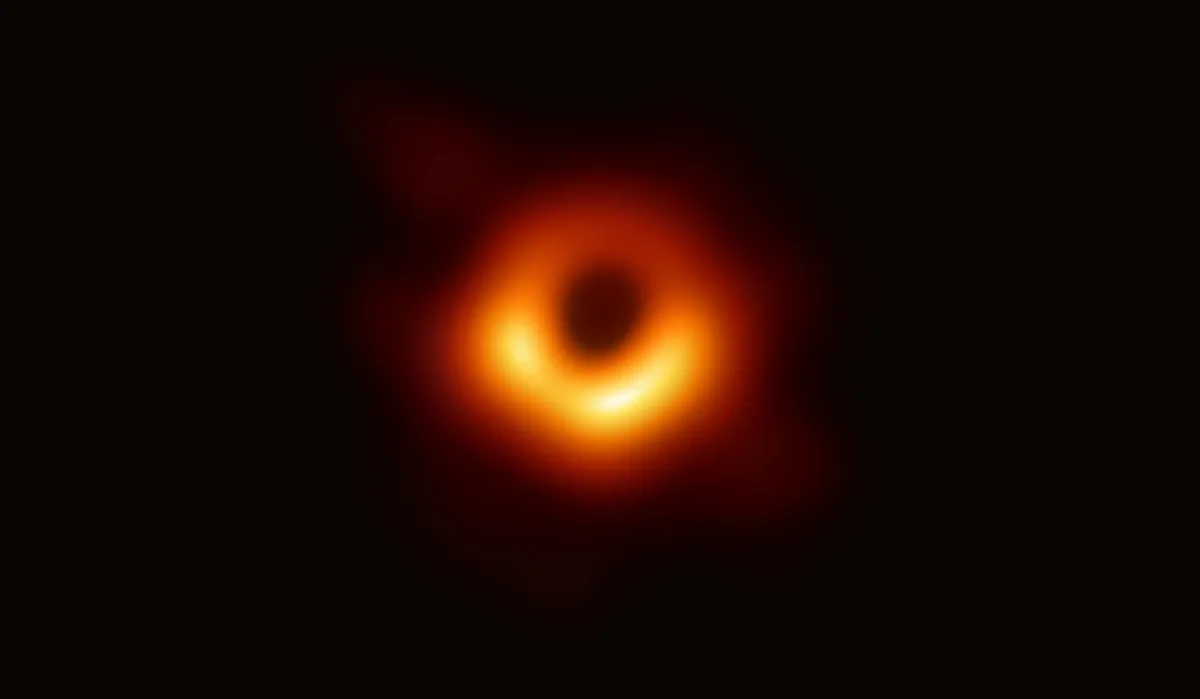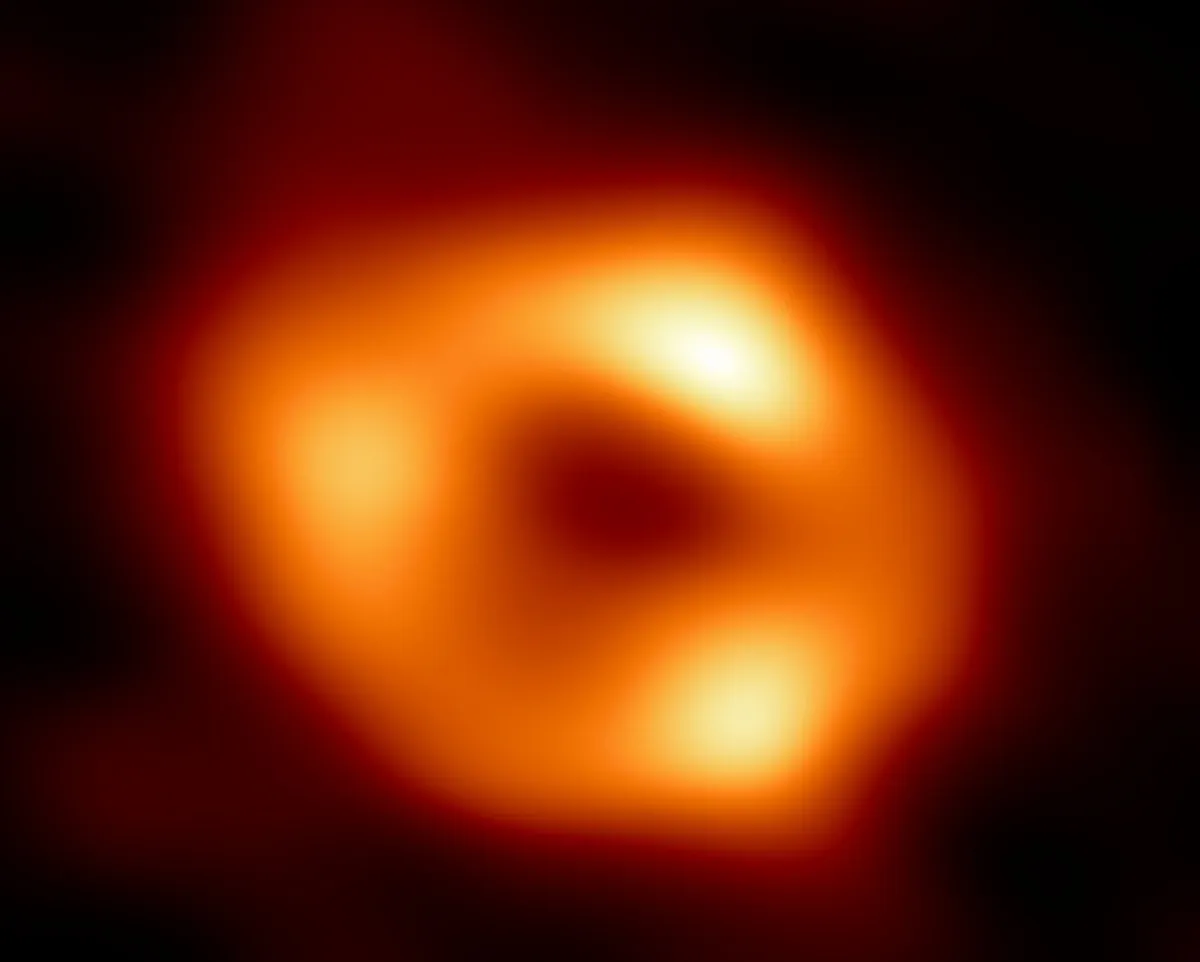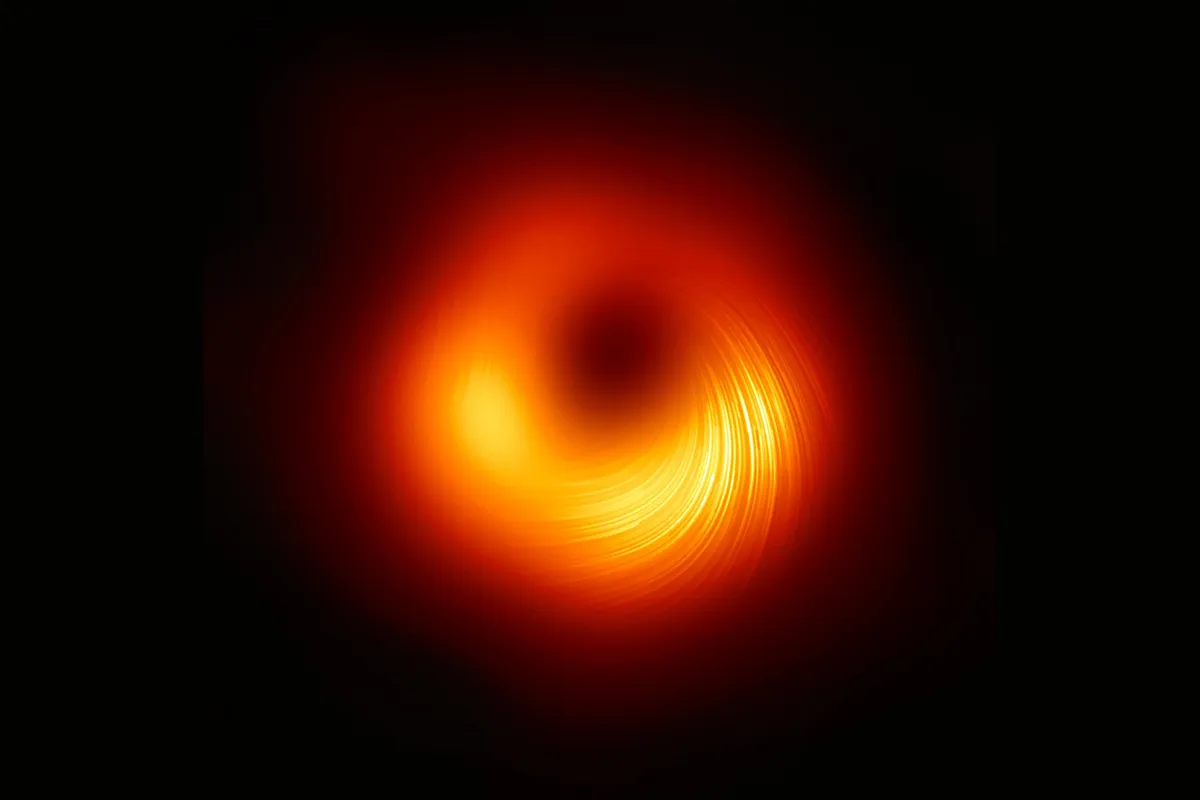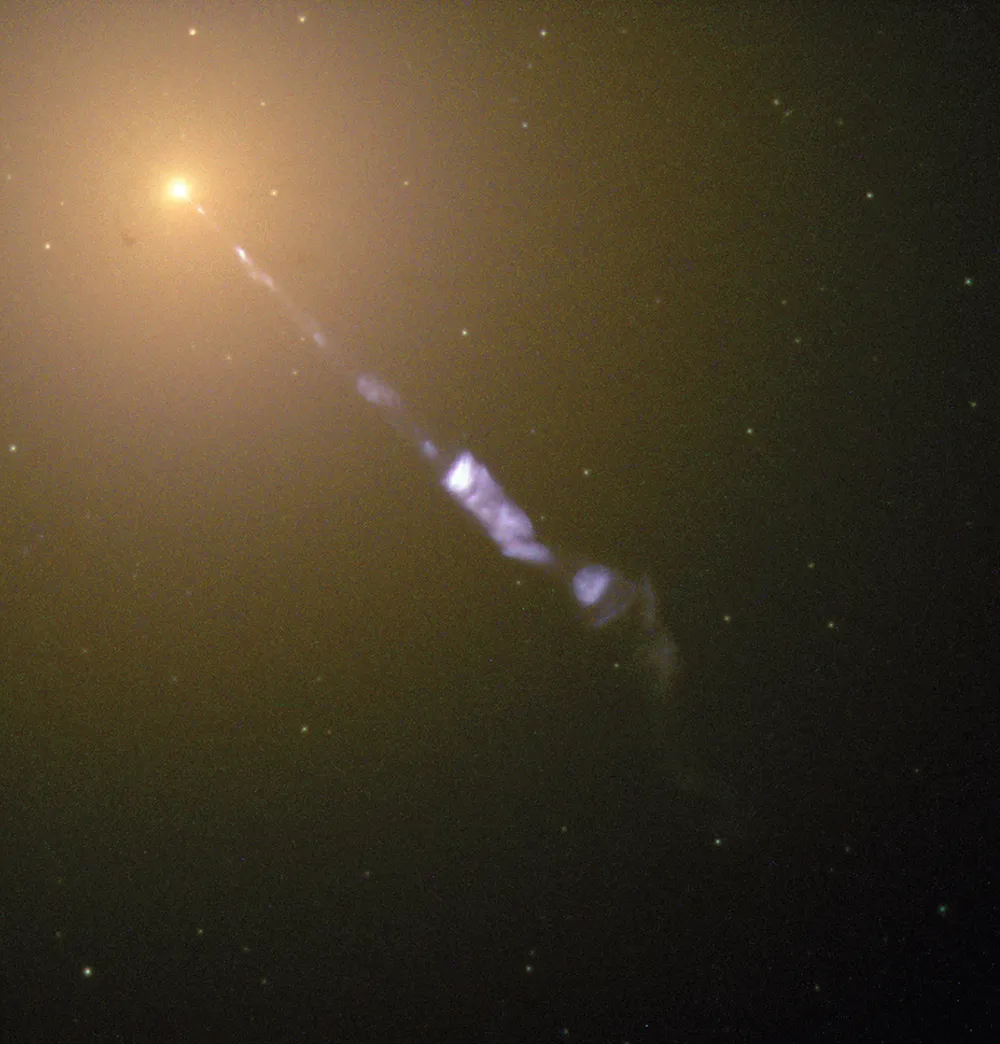Astronomers have uncovered strong, organised magnetic fields spiralling into the supermassive black hole at the centre of our Galaxy.
Known as Sagittarius A* (Sgr A), the supermassive black hole at the middle of the Milky Way is revealed in polarised light for the first time in a new image.
What's more, the study behind the image release shows the magnetic field structure at the centre of Sagittarius A* is similar to the black hole at the centre of galaxy M87.

To date, these are the only two black holes that have ever been photographed, and both feats were achieved by the Event Horizon Telescope, which involves radio telescopes across the globe linked together to create an Earth-sized observatory.
Comparisons between the two black holes have enabled astronomers to infer some commonalities that may exist between supermassive black holes in general, such as strong magnetic fields.
The results also suggest there could be a hidden jet of material emanating from our own supermassive black hole.
The story begins

In April 2019, astronomers revealed to the world the very first image of a black hole ever captured.
That black hole is located at the centre of galaxy M87 and is known as a supermassive black hole.
Astronomers think that most galaxies have a supermassive black hole at their centre, including our own Milky Way galaxy.
In 2022, astronomers released a second image: this time of the supermassive black hole at the centre of our galaxy.
Comparing Sagittarius A* with M87's black hole

The two images showed that even though the Milky Way's supermassive black hole is over 1,000 times smaller and less massive than M87’s, it appears similar.
In 2021, studies of light surrounding the M87 black hole showed how the magnetic fields surrounding it caused it to launch powerful jets of material into space.
And this latest image shows the same could be true for Sagittarius A*

Polarised light explained
The two black hole images were both captured in polarised light, but what does this mean?
Light is an electromagnetic wave that moves, or oscillates.
Sometimes this oscillation occurs in a specific orientation, and this is known as 'polarised'.
Polarised light is invisible to the human eye, but in plasma around the black holes, particles shooting around magnetic field lines reveal a polarisation pattern perpendicular to the field.
This enables astronomers to see black holes from a different perspective and map their magnetic field lines.

"By imaging polarised light from hot glowing gas near black holes, we are directly inferring the structure and strength of the magnetic fields that thread the flow of gas and matter that the black hole feeds on and ejects," says Harvard Black Hole Initiative Fellow and project co-lead Angelo Ricarte.
"Polarised light teaches us a lot more about the astrophysics, the properties of the gas, and mechanisms that take place as a black hole feeds."
Black hole jets

One key issue that the data could help astronomers learn more about is black hole jets.
These are jets of material that shoot away from a black hole, causing the black hole to give off powerful light.
Seen as the bright cores of galaxies, they're known as active galactic nuclei.
"M87* and Sgr A* are different in a few important ways: M87* is much bigger, and it’s pulling in matter from its surroundings at a much faster rate," says Michi Bauböck, postdoctoral researcher at the University of Illinois Urbana-Champaign.
"So, we might have expected that the magnetic fields also look very different. But in this case, they turned out to be quite similar, which may mean that this structure is common to all black holes.
"A better understanding of the magnetic fields near black holes helps us answer several open questions—from how jets are formed and launched to what powers the bright flares we see in infrared and X-ray light."
The Event Horizon Telescope has conducted several observations since 2017 and is scheduled to observe Sgr A* again in April 2024.
Perhaps more discoveries shining light on the mysteries of black holes await…
This research was presented in two papers by the EHT collaboration published in The Astrophysical Journal Letters: 'First Sagittarius A* Event Horizon Telescope Results. VII. Polarization of the Ring' (doi: 10.3847/2041-8213/ad2df0) and 'First Sagittarius A* Event Horizon Telescope Results. VIII. Physical Interpretation of the Polarized Ring' (doi: 10.3847/2041-8213/ad2df1).

